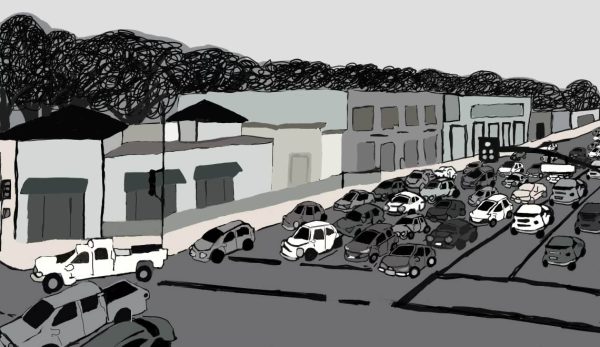Turkey’s grim earthquake lessons
An earthquake destroys the ground near a city.
March 22, 2023
California shares similar seismic conditions to Turkey, and the recent earthquakes there lay bare the vulnerability the state shares.
On the morning of February 6, the ground of Southeastern Turkey and Northern Syria was broken as a 7.5 magnitude earthquake ripped across the East Anatolian fault line. What followed was utterly catastrophic — over 6,000 buildings across the region were reduced to 210 million tons of rubble. While Turkey has faced serious earthquakes before –– including the 1999 Izmit earthquake, which killed over 17,000 people –– they paled in comparison to the havoc which was wrecked last month. After 13 days of search and rescue operations, the final death toll for this quake was over 50,000. California needs to take notes in order to prepare for its own inevitable quake.
Los Angeles, and California more broadly, are cursed with a similar seismic geography to Turkey. The San Andreas Fault, part of the “Pacific Ring of Fire” that produced the catastrophic 2011 Tōhoku and 2004 Sumatra-Andaman earthquakes (the most costly and deadly earthquakes of the 21st century), runs right through California and next to the Los Angeles metro area. Because of the seismic instability of the San Andreas fault, California is predisposed to experience catastrophic earthquakes. In fact, a survey by the U.S. Geological Service (USGS) found that a similar 7.8 earthquake would kill over 1,800 people in Los Angeles and do 213 billion dollars in infrastructure damage. Tens of thousands would be injured, and hundreds of thousands would be displaced.
The likelihood that an earthquake larger than 6.7 magnitude hits California is over 70% in the next decade, and the likelihood one over 7.5 strikes is 30% over the next 30 years. With thousands of lives at stake, these are not numbers California should be taking lightly. The state has the economic resources to prepare itself adequately for the earthquakes, but there is a lack of political awareness and will to effect these reforms.
One of the most significant issues with the Turkey-Syria earthquake was the lack of earthquake-proofing construction regulations across the nation. California is significantly different in this regard: it has some of the most stringent earthquake building regulations in the world.
Still, these regulations are far from perfect. There are, even after over a billion dollars was spent on retrofitting soft-story buildings, over 4,000 such structures in Los Angeles. San Francisco has another 500. More dangerously, brittle concrete and unreinforced brick buildings, which according to the USGS are the two most dangerous types of buildings in an earthquake, are still widely prevalent in California. Over 1,900 of these structures remain in Los Angeles, as well as nearly 4,000 in San Francisco. Regulations for such structures are handled on a local basis, preventing unified total protection of California’s major cities against earthquakes. The lack of standardized regulations is a serious flaw that can have severe consequences, as local bureaucracies greatly inhibit California from ensuring that such dangerous structures are refitted.
In the Turkey and Syria earthquake, another key issue was the lack of response teams on the ground. While they worked effectively, the scale of destruction was simply so large that services were stretched. California should prepare for this eventuality by putting more funding and training into our local first responders’ earthquake search and rescue capabilities, as well as increasing pre-stocking of the necessary equipment to be used in an earthquake.
All of California needs to adopt a unified policy to remedy both first responder preparedness and building regulations, just as the state has done with its early warning system MyShake. It is necessary to ensure more public awareness, more organized regulations and more funding to retrofit vulnerable structures and prepare first responders to the fullest extent. These are the logical next steps to clean up the currently conflicting local policies and levels of political interest in the area of earthquake preparedness. This is a goal in which every Californian has a stake — ensuring the state does not become a repeat of what occurred in Turkey.






































